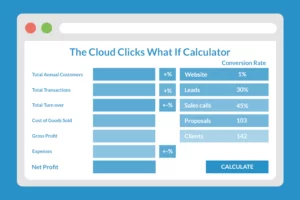Maximizing the conversion rate of your website is an essential element for achieving success in e-commerce for all digital marketers. In this comprehensive guide, we will delve into the most effective strategies and techniques that can significantly increase the conversion rate on your site. By following these steps, you’ll be able to increase your conversion rate and ultimately boost your revenue.
We begin by identifying your target audience, which involves defining your target market, analyzing your current audience, and researching potential clients. Next, we discuss optimizing website design for better user experience through interface improvements, visual appeal enhancements, and streamlined navigation.
Furthermore, we explore the value proposition crafting compelling content with engaging copywriting techniques and SEO strategies to maximize visibility. We also emphasize the importance of utilizing social media platforms to establish an online presence while developing unique content strategies for each platform.
Last but not least, tracking performance metrics is essential in monitoring progress toward achieving website and conversion rate optimization goals. We provide insights on setting objectives as well as measuring key performance indicators (KPIs) to analyze results effectively and make necessary adjustments for continuous improvement in website conversion rates.
Here are some quick tips for getting the highest website conversions.
1. Identifying Your Target Audience
Understanding your target market is crucial for improving your website conversion rate. By defining their characteristics, analyzing your current audience, and researching potential customers, you can tailor your marketing efforts to resonate with the right people.
In this part, we’ll go over ways to identify your target demographic, review the makeup of your existing customers and explore possibilities for prospective clients.
The better you understand your user’s behavior, the easier you’ll find it to boost conversion rates. Understanding them and addressing their concern will help achieve customer loyalty, which will boost conversion rates in the long run.

Defining Your Target Market
To define your target market effectively, consider factors such as demographics (age, gender), geographic location, psychographics (interests and preferences), and behavioral patterns (purchase habits).
Create a list of all the possible hesitations and objections your potential customers might have. You may find some data on it in the customer testimonials and feedback portion.
Once you understand your users’ pain points, you can then begin testing to improve user experience and, in turn, increase your website conversion rates. This information helps you create a detailed buyer persona, which serves as a representation of an ideal customer for whom you’ll be creating content or products.
Analyzing Your Current Audience
Your existing audience can provide valuable insights into who may be interested in what you offer. Analyze data from various sources like Google Analytics or social media analytics tools to understand user behavior on-site and off-site engagement metrics. Look at aspects such as:
- Bounce rates: The percentage of visitors who leave after viewing only one page.
- Average session duration: How long users spend on average browsing through pages on the site.
- Traffic source: Where are users coming from? Are they finding you via search engines or social media platforms?
You may use on-site surveys to pinpoint visitor frustrations. This way you can get real feedback from actual visitors in real-time, while they are experiencing your website.
Researching Potential Customers
In addition to analyzing data about existing audiences’ behaviors online when visiting websites similar yours’, it’s essential also to gather feedback directly from them – either by conducting surveys asking questions related product/service preferences, conducting interviews, or focus groups. This will help you identify gaps in your current offerings and uncover new growth opportunities.
Once you comprehend the people your product/service is intended for, it’s simpler to make content that interests them and customize promotional approaches accordingly. This information can also inform decisions about website design, user experience improvements, and other factors that contribute directly to conversion rates.
Once the intended viewers have been pinpointed, optimizing your website’s layout to raise conversion rates is essential. By focusing on user-friendly interfaces, visual appeal, and branding, as well as navigation and site structure, you can ensure that visitors will be more likely to stay on the landing page longer leading to an increased conversion rate.
2. Optimizing Your Website Design
By optimizing the design of your website with a user-friendly interface, enhanced visual appeal and branding, as well as improved navigation and site structure, you can increase its conversion rate. Optimize layouts of your critical pages to make them appealing to visitors. Ensure that your value proposition is well communicated on your landing page.
An attractive and easy-to-use website will keep visitors engaged longer, increase the conversion funnel, create a positive customer journey, encourage more leads and increase conversions.

Creating a User-Friendly Interface
A user-friendly interface ensures that website visitors can easily interact with your website or online store without any confusion or frustration. To achieve this:
- Use clear fonts in an appropriate size for readability.
- Maintain consistency in layout across all pages.
- Incorporate white space to avoid cluttering the page with too much information.
- Ensure buttons are large enough for users on mobile devices to tap easily.
- Set up a live chat feature with a customer service representative or a sales team to help with customer queries resolving complaints, or even tracking orders. Implementing a live chat tool would affect conversions on your website,
- Let your guest check out orders without needing to sign up as a user . Additionally, you may also utilize a third-party signup service to help direct visitors to your site.
- It is recommended to start your CTA ( call to action) with the word ‘Yes’, it’s highly effective psychologically because it positions your offer in a positive light.
- To draw in more customers you may include a search box feature to help them easily find what they need.
Enhancing Visual Appeal and Branding
The visual appearance of your website plays a significant role in capturing visitor attention. Invest time in developing strong branding elements like logos, color schemes, and typography choices that reflect your business identity. Some tips include:
- Select colors that evoke positive emotions related to your industry (e.g., blue for trustworthiness).
- Create a logo that gives an immediate impression of your brand.
Improving Navigation and Site Structure
Visitors seeking information can be more likely to stay and convert if your website has a well-arranged structure with easy-to-follow navigation to help simplify the user journey. Consider implementing these strategies:- Create a clear and concise landing page menu that includes all essential pages (e.g., Home, About Us, Services/Products, Contact).
- Implement a search bar to help users quickly locate specific content.
- Remove unnecessary form fields and irrelevant items on your landing pages and product pages.
- A simple way to boost your site’s credibility is by making your contact information clear: phone number, physical address, and email address.
- Incorporate eye catching pop ups that will encourage an increased conversion rate.
Optimizing your website design is essential for creating a user-friendly interface on both desktop and mobile site, enhancing visual appeal and branding, and improving navigation and site structure without compromising the page speed should be the goal.
Crafting compelling content is the next step to take to increase conversion rates on your website; this includes writing engaging copy and headlines, incorporating visuals and multimedia elements, as well as leveraging SEO strategies for maximum visibility.
3. Crafting Compelling Content
To ensure your website is as effective and successful as possible, it is imperative to craft content that resonates with your intended audience. Another way to increase conversion rates is to involve in writing engaging copy and headlines, incorporating visuals and multimedia elements, and leveraging SEO strategies for maximum visibility.

Writing Engaging Copy and Headlines
Crafting content that appeals to your intended viewers is essential; it should be compelling, convincing, and tailored to the desires of those you are targeting. To achieve this goal:
- Create attention-grabbing headlines that encourage visitors to read further.
- Focus on the benefits of your products or services rather than just listing features.
- Use clear language that speaks directly to potential customer’s pain points or desires.
- Incorporate storytelling techniques where appropriate to make an emotional connection with readers.
- Test your headlines and see if you can drive a noteworthy improvement in your conversion metrics.
- You may try using a strategy including a money-back guarantee to give assurance to your clients. Although money back guarantee is a risky strategy , it builds trust and confidence in your brand.
Copyblogger’s Copywriting 101 guide offers valuable tips on crafting compelling sales copy that converts visitors into customers.
Incorporating Visuals and Multimedia Elements
A picture is worth a thousand words; therefore, using visuals effectively can significantly enhance user engagement on your site. Consider these tips when incorporating visual elements:
- Select high-quality images relevant to the content they accompany – avoid generic stock photos if possible.
- Add videos demonstrating product features or testimonials from satisfied clients as evidence of the value provided by you.
- Create infographics presenting complex data in a visually appealing manner
- If applicable include interactive tools like quizzes calculators etc., which provide personalized information based on users’ input thus increasing their likelihood of convert
- Pop ups can grab your visitors’ attention at the right moment. Set a cookie by using pop up tools so the pop-up only appears once per user. Make pop ups easy to close to avoid customer frustration. This combination will give you a huge boost in conversions and keep the complaints to zero.
- Incorporate social proof like testimonials and reviews in a form of video or text from actual customers.
Creating compelling content is essential for successful digital and marketing campaigns, allowing you to reach your target market. Utilizing social morel media platforms offers another opportunity to engage with potential customers and promote your business online.
4. Utilizing Social Media Platforms
In the digital age, social media platforms have become a critical element of any business’s marketing approach. By establishing a strong online presence on popular platforms, you can reach a wider audience and drive more traffic to your website, ultimately improving your conversion rate. To make the most of social media, it is essential to create a presence on popular networks, devise content plans for each platform and engage with followers to boost engagement.

Establishing an Online Presence on Popular Platforms
To begin with, you must identify the most relevant social media channels for your target clients to boost conversions. Some of the most popular platforms include Facebook, Twitter, LinkedIn, Instagram, and Pinterest. Once you’ve identified the best channels for your business niche and target market demographics, create profiles that reflect your brand identity consistently across all chosen networks.
Developing a Content Strategy for Each Platform
Each social media platform has its unique characteristics which require tailored content strategies. To maximize engagement and conversions from these channels:
- Create high-quality visual content such as images or videos that resonate with users’ interests.
- Craft compelling captions that encourage users to engage with posts through likes or comments.
- Publish informative articles or blog posts related to industry trends to establish thought leadership within your field.
- Share user-generated content (UGC) like testimonials or customer reviews to build trust and credibility among your audience.
- Utilize platform-specific features such as hashtags, polls, or stories to increase visibility and user interaction.
- Add elements of social proof such as user reviews, customer testimonials, and experts’ approval.
- Update your site content regularly to avoid broken links that might create distrust in your credibility.
Interacting with Followers to Increase Engagement
Interacting with Followers is a key factor in fostering engagement , gaining valuable customer insights which likely leads to increase conversion rate. This helps foster a sense of community around your brand while also providing valuable insights into customer preferences and feedback. Some effective ways of interacting with followers include:
- Responding promptly to comments or messages from users to address their concerns or questions.
- Liking or sharing posts from other relevant accounts within your industry niche in order to establish connections and expand reach.
- Promoting exclusive offers, discounts, or promotions through social media channels as an incentive for users who engage with your brand online.
- Hosting contests or giveaways on platforms like Instagram which encourage user-generated content (UGC) submissions while also increasing overall engagement levels.”.
By utilizing social media platforms, businesses can increase their online presence and engagement with followers. Tracking performance metrics is the next step to understanding how successful these efforts have been in order to make adjustments for future campaigns. Therefore, creating a great user experience is critical to driving website conversions
5. Tracking Performance Metrics
To ensure effective optimization of your website and conversion rate optimization, tracking performance metrics and making data-driven decisions are essential. This involves setting goals and objectives, monitoring key performance indicators (KPIs), and analyzing results to make adjustments.

Setting Goals and Objectives
To ensure that progress can be tracked, clear goals and objectives need to be set for the desired outcome of digital marketing efforts. These could include increasing sales or leads, improving customer engagement, or boosting brand awareness. By defining specific targets, such as a desired conversion rate percentage or the number of new customers acquired per month, you’ll have a benchmark against which to measure progress.
Monitoring Key Performance Indicators (KPIs)
KPIs are measurable values that help determine how well your website is performing in relation to its goals. Some common KPIs for tracking conversion rates include:
- Bounce Rate:
The percentage of visitors who leave after viewing only one page on your site. - Average Time on Site:
How long do users spend browsing your content before leaving the site? When it comes to mobile conversion, a huge obstacle is page speed. Improving your page speed will have a huge impact on your user experience. - New vs Returning Visitors
A comparison between first-time visitors and those who return multiple times. - Traffic Sources:
Where users come from when they visit your site (e.g., organic search results).
You can use tools like Google Analytics (link) or Adobe Analytics (link) to monitor these KPIs regularly so that you’re always aware of how well -or poorly- different aspects of your website are performing.
Analyzing Results to Make Adjustments
Once you’ve obtained the information regarding your website’s performance, take a deeper look to identify any patterns or trends that could suggest changes that enhance user experience.
Look for patterns or trends in the data that may indicate areas where improvements can be made. Tackle and take note cart abandonment in your online store. If the data reveals abelow-averagee cart abandonment rate or high bounce rate on particular pages, it may be worth revising them to capture users’ attention and make them explore more of your site.
Testing different approaches continually can be a great way to refine your tactics. A/B testing is a popular method for comparing two versions of a webpage or marketing campaign element (e.g., headlines; length tone use) side-by-side so that you can determine which one performs best based on real user interactions.
Successful A/B testing can bring a 50% increase in conversion funnel and the average revenue per unique visitor for ecommerce sites – so no wonder 77% of organizations are running A/B tests to increase their conversion rates.
In summary, test your own site and figure out what you need to do. Tracking performance metrics is essential for identifying opportunities to improve your website conversion rate.
By setting clear goals and objectives, monitoring KPIs regularly with tools like Google Analytics or Adobe Analytics, analyzing results thoroughly, and making, necessary adjustments informed by data-driven insights will help ensure continuous improvement in achieving desired outcomes from digital marketing efforts.
Frequently Asked Questions How to Improve Your Website’s Conversion Rate
Conclusion
By following the steps outlined in this blog post, you can improve your website, increase your conversion rate, and increase sales. To maximize the effectiveness of a digital marketing strategy, it is necessary to optimize website design, create compelling content, leverage social media platforms, and measure performance metrics. By putting in the effort, you can eventually reap the rewards of these tactics.
Take control of your site’s conversion rate and start seeing results with our cloud-based digital marketing solutions. To increase your conversion rate is to improve your marketing ROI. Increase conversions means better ROI, customer satisfaction, and improved customer journey.
The more conversions you gain , the higher the impact you drive on your top line from your existing traffic. Leverage the power of analytics to maximize ROI, increase engagement, and drive conversions for your business.







